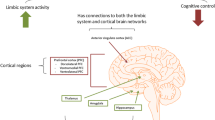Abstract
Neurocysticercosis (NCC) is a common central nervous system (CNS) infection caused by Taenia solium metacestodes. Depression is present in 53–85% of the NCC patients. The present study was aimed to evaluate the correlation of signs of NCC activity (evolution phase of NCC cysts and CSF characteristics) with depression. The study group consisted of 65 patients subdivided into two groups: NCC with epilepsy (48) and NCC without epilepsy [17]. Depression was assessed and quantified by the Hamilton Rating Scale for Depression (HRSD-21) and compared with CSF inflammatory characteristics (increase of WBCs and total protein) and presence of calcifications or cysts. There was no difference between the scores of depression in the group with CNS calcifications or cysts. CSF signs of active disease, specifically increase of CSF TP, were significantly more frequent in patients with mild depression and in non-depressant patients. The depression scores were inversely proportional to the CSF TP levels in the groups with depression. Although immunological factors could be associated with the development of depression, the data above lead us to make assumptions about the association of other factors such as genetic predisposition, or social and cultural factors.





Similar content being viewed by others
Abbreviations
- CSF:
-
Cerebrospinal fluid
- HCV:
-
Hepatitis C virus
- HRSD:
-
Hamilton Rating Scale for Depression
- IL:
-
Interleukin
- LP:
-
Lumbar puncture
- NCC:
-
Neurocysticercosis
- TP:
-
Total protein
- WBC:
-
White blood cell
References
Del Brutto, O. H., & Sotelo, J. (1988). Neurocysticercosis: An update. Reviews of infectious diseases, 10, 1075–1087.
De Giorgio, C. M., Sorvillo, F., Wallin, M. T., Escueta, S. P., & Kurtzke, J. F. (2005). Neurocysticercosis in the United States: Review o fan important emerging infection. Neurology, 64, 1486.
Takayanagui, O. M., & Jardim, E. (1983). Therapy for neurocysticercosis: Comparison between albendazole and praziquantel. Archives of Neurology, 49, 290–294.
Garcia, H. H., & Del Bruto, O. H. (2005). Neurocysticercosis:Updated concepts about an old disease. Lancet Neurology, 4, 653–661.
Andrade-Filho, A. S., Souza, A. P. Q. U., & Souza, Y. M. A. (1997). Neurocisticercose. Revisão. Parte I. RBNP, 1, 125–130.
Ong, S., Talan, D. A., Moran, G. J., Mower, W., Newdow, M., & Tsang, V. C. (2002). Neurocysticercosis in radiographically imaged seizure patients in U.S. emergency departments. Emerging Infectious Diseases, 8, 608–613.
Ko, D. (2003) Seizures in neurocysticercosis at LAC USC Medical Center. Epilepsia, 44, 15.
Richards, F. O., Schantz, P. M., Ruiz-Tiben, E., & Sorvillo, F. J. (1985). Cysticercosis in Los Angeles County. JAMA, 254, 3444–3448.
Ramirez-Bermudez, J., Higuera, J., Sosa, A. L., Lopez-Meza, E., Lopez-Gomez, M., & Corona, T. (2005). Is dementia recersible im patients with neurocysticercosis? Journal of Neurology, Neurosurgery and Psychiatry, 76, 1164–1166.
Forlenza, O. V., Filho, A. H., Nobrega, J. P., dos Ramos Machado, L., de Barros, N. G., de Camargo, C. H., et al. (1997). Psychiatric manifestations in neurocysticercosis: A study of 38 patients from a neurology clinic in Brazil. Journal of Neurology, Neurosurgery and Psychiatry, 62, 612–616.
Almeida, S. M., & Gurjão, S. A. (2010). Frequency of depression among patients with neurocysticercosis. Arquivos de neuro-psiquiatria., 68, 76–80.
Del Brutto O. H., Rajshekhar V., White A. C. Jr, Tsang V. C., Nash T. E., Takayanagui O. M., et al.(2001) Proposed diagnostic criteria for neurocysticercosis. Neurology, 24(57),177–83.
Sotelo, J., Guerrero, V., & Rubio, F. (1985). Neurocysticercosis: a new classification based on active and inactive forms. A study of 753 cases. Archives of Internal Medicine, 145, 442–445.
Hamilton, M. (1960). Rating scale for depression. Journal of Neurology, Neurosurgery and Psychiatry, 23, 56.
Kessler, R. C., McGonagle, K. A., Zhao, S., Nelson, C. B., Hughes, M., Eshleman, S., et al. (1994). Lifetime and 12-month prevalence of DSM-IIIR psychiatric disorders in the United States. Archives of General Psychiatry, 51, 8–19.
Bastos, F. O. (1953). Aspectos psiquiatricos da neurocisticercose. Revista Paulista de Medicina, 43, 162–164.
Pupo P. P., Cardoso W., Reis J. B., Silva C. P. Sobre a cisticercose encefálica: estudo clínico, anátomo patológico, radiológico e do LCR. Arquivos Assist Psicopatology 1945/1946, 10/113–123.
Tretiakoff, C., & Pacheco e Silva, A. C. (1924). Contribuição para o estudo da cysticercose cerebral e em particular das lesões cerebraes tóxicas a distancia nesta afecção. Memórias do Hospício Juqueri, 1, 37–66.
Atkinson, J. H., Heaton, R. K., Patterson, T. L., Wolfson, T., Deutsch, R., Brown, S. J., et al. (2008). Two-year prospective study of major depressive disorder in HIV-infected men. Journal of Affective Disorders, 108, 225–234.
Loftis, J. M., Huckans, M., Ruimy, S., Hinrichs, D. J., & Hauser, P. (2008). Depressive symptoms in patients with chronic hepatitis C are correlated with elevated plasma levels of interleukin-1beta and tumor necrosis factor-alpha. Neuroscience Letters, 430, 264–268.
Restrepo, B. I., Alvarez, J. I., Castaño, J. A., Arias, L. F., Restrepo, M., Trujillo, J., et al. (2001). Brain granulomas in neurocysticercosis patients are associated with a Th1 and Th2 profile. Infection and Immunity, 69, 4554–4560.
Chavarría, A., Fleury, A., García, E., Márquez, C., Fragoso, G., & Sciutto, E. (2005). Relationship between the clinical heterogeneity of neurocysticercosis and the immune-inflammatory profiles. Clinical Immunology, 116, 271–278.
Aguilar-Rebolledo, F., Cedillo-Rivera, R., Llaguno-Violante, P., Torres-López, J., Muñoz-Hernandez, O., & Enciso-Moreno, J. A. (2001). Interleukin levels in cerebrospinal fluid from children with neurocysticercosis. American Journal of Tropical Medicine and Hygiene, 64, 35–40.
Uddin, J., Gonzalez, A. E., Gilman, R. H., Garcia, H. H., Verastegui, M., Moore, L. J., et al. (2006). Neurocysticercal antigens stimulate chemokine secretion from human monocytes via an NF-kappaB-dependent pathway. Microbes and infection, 8, 1732–1740.
Conflict of Interest
None declared.
Author information
Authors and Affiliations
Corresponding author
Rights and permissions
About this article
Cite this article
de Almeida, S.M., Gurjão, S.A. Is the Presence of Depression Independent from Signs of Disease Activity in Patients with Neurocysticercosis?. J Community Health 36, 693–697 (2011). https://doi.org/10.1007/s10900-011-9362-x
Published:
Issue Date:
DOI: https://doi.org/10.1007/s10900-011-9362-x




